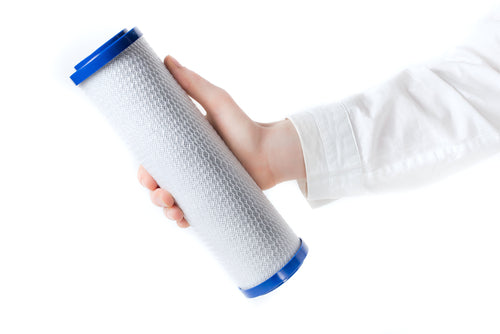
Aug 16 , 2017
What Are String Wound Water Filters and How Are They Used?
The history of water filtration has been an issue that has occupied people regarding engineering and medicine for millennia. Among the earliest people to tackle the problem were the ancient Indians and Egyptians. Alongside them was Hippocrates, who pioneered the use of the Hippocratic sleeve a cloth bag that water could be poured through after being boiled to help treat his patients.
Today, water filtration is an exact science and remains an issue that occupies large amounts of scientific ingenuity. After all, the quality of the water we use is inescapably important. It is crucial to homes, communities, and whole industries.
That being the case, there are many approaches to ensuring water quality and purity, ranging from the mechanical sieve-like approach pioneered by Hippocrates to industrial-scale chemical scrubbing for harmful substances and residue. However, one of the most common methods of water filtration for sediment in homes is the use of string wound water filters. But what exactly are string wound water filters?
String Wound Water Filters Construction and Application

As the name suggests, string wound water filters consist of a central cartridge wrapped in string. The string varies in thickness by layer, so the outer layer can trap the largest particles, getting progressively thinner to the center, which provides the overall rating (e.g. 5 micron) of the filter.
String wound water filters are a type of depth filter which is a filter that catches dirt not just on its surface, but the whole way down to its core. It is important to remember that string wound filters are exclusively sediment filters. They physically trap dirt and sediment from the water, and, therefore, they are not suitable for filtering chemicals or altering the taste of the water.
String wound water filters date back a long time. The first to be sold in the U.S. was in the mid-1930s. It was made of a woven wire mesh wrapped in cotton yarn, which was wrapped in a diamond pattern. The corners of the diamond shapes were the main points at which dirt would be trapped, rather than filtering sediment the whole way through the structure.
Later, in the 1960s and 70s, string wound filters began to rise in popularity. This was partly due to the increase in the use of polypropylene core and other synthetic fabrics, which were preferred to cotton as they were resistant to the growth of microorganisms and could be treated to be compatible with or resistant to various chemicals. This generation of string wound filters normally used rovings rather than traditional yarns. These were partially twisted rolls or strands of fibers that were more cost-effective and normally extended the life of the filter, as they allowed more water to pass through.
Later, the rovings were generally replaced by friction-spun yarns. These are comparatively bulky and have less resistance to flow, which helps to further increase the performance life of the water filter. However, the treatment process for the fibers used in both rovings and friction-spun yarns can result in some chemicals leaching into the water, and the short length of the fibers means they are prone to being displaced, which limits the performance of the filter.
String Wound Filters Today
More recently, string wound water filters have been produced according to a different method, where, rather than using shorter fibers, single continuous filaments are used that run the length of the cartridge and are carefully wound together. This method involves melt-spun fibers, which are free from the chemical treatment process used in rovings and friction-spun styles. Also, the arrangement of the fibers is extremely stable, as they are randomly oriented and are produced with short loops protruding from their surfaces. When they are wound together, these loops trap one another, helping to enmesh the fibers and prevent them from being dislodged. The use of computers in designing the arrangement also means the distance between the yarns can be carefully controlled, which helps to fine-tune the filtering capabilities and microns of the outer layers versus the inner ones, which provides an effective solution for improving the performance of the filter overall and ensuring the separate layers function as intended.
Conclusion

String wound water filters are a common and extremely effective choice in many contexts, and the more recent designs have further increased their efficacy over what was already a reliable and cost-effective design. In the vast majority of cases, they are an effective choice for any residence or business.


